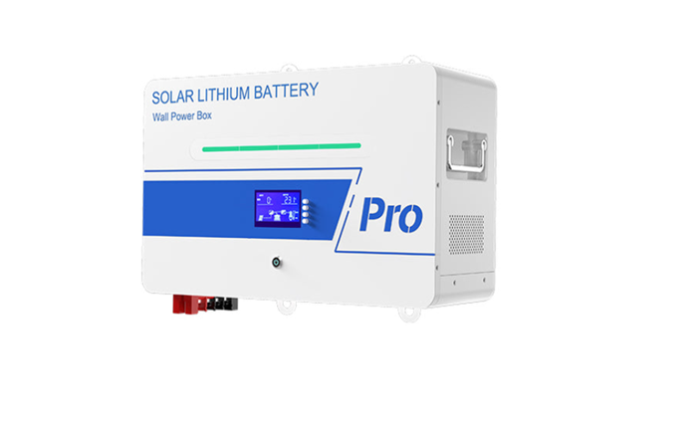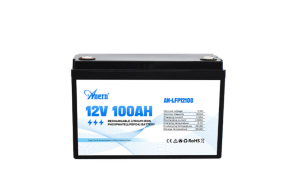When John Martinez’s power went out during a critical work presentation, he knew it was time to take control of his home’s energy future. Like many homeowners, he turned to solar batteries as the solution – only to face a maze of technical specifications, conflicting advice, and costly mistakes. With residential solar battery installations surging by 40% annually, countless families are seeking energy independence but struggling to navigate the complex landscape of lithium ion solar battery technology. Making the wrong choices in battery selection, sizing, or installation can lead to thousands in wasted costs, dangerous safety issues, and unreliable backup power when you need it most. This comprehensive guide cuts through the confusion with expert insights and practical solutions, empowering you to make informed decisions about your home’s energy storage system while avoiding the costly pitfalls that trap many first-time buyers.
Why Lithium Ion Solar Batteries Dominate Home Energy Storage
Lithium iron phosphate (LiFePO4) batteries have revolutionized home energy storage, offering unmatched advantages over traditional alternatives. Unlike lead-acid batteries that typically last 5-7 years, LiFePO4 batteries maintain 80% capacity even after 10 years of daily use. Their superior energy density allows for compact installation while delivering up to 98% round-trip efficiency, compared to lead-acid’s mere 80%. This translates to capturing and utilizing more of your solar production. Industry leaders like Anern have pioneered LiFePO4 batteries that excel in safety, featuring inherent thermal and chemical stability that prevents thermal runaway – a critical advantage over other lithium chemistries. When analyzing decade-long performance, LiFePO4 systems demonstrate the lowest cost per cycle, despite higher upfront investment. Their ability to operate in extreme temperatures while requiring minimal maintenance makes them ideal for whole-home backup power. Modern high-performance batteries leverage this technology with advanced battery management systems, enabling deeper discharge cycles without degradation and supporting smart features like remote monitoring and adaptive charging algorithms.
Calculating Your Lithium Ion Solar Battery Capacity
Auditing Household Energy Consumption
Understanding your home’s energy needs starts with a detailed power audit. Begin by examining your utility bills across seasons to establish baseline consumption patterns. Install a home energy monitor to track real-time usage of major appliances like HVAC systems, water heaters, and refrigerators. Keep a usage log for one week, noting peak consumption hours and identifying energy-intensive activities. Smart meters can provide granular data on 15-minute intervals, revealing hidden power draws from phantom loads and standby devices.
Right-Sizing Your Solar Energy Storage
To determine optimal battery capacity, first calculate your daily essential power requirements. Consider critical loads that must run during outages, typically ranging from 5-15 kWh per day for most homes. Factor in the battery’s depth of discharge limit – while lithium ion batteries can safely discharge to 20% capacity, maintaining a 30% reserve extends battery life. Plan for 2-3 days of autonomy in areas prone to extended outages. When sizing your system, account for future needs like electric vehicle charging or home additions. Most households start with 20kWh of usable capacity but include connection points for expanding to 40-80kWh as needs grow. This modular approach provides flexibility while avoiding overinvestment in unused capacity.
Top 5 Lithium Ion Battery Pitfalls and Prevention Strategies
While lithium ion solar batteries offer remarkable benefits, avoiding common pitfalls requires careful attention to critical details. Temperature management stands as the foremost challenge – batteries installed in unconditioned spaces can experience severe performance degradation and safety risks. Prevent this by ensuring proper ventilation, installing thermal monitoring systems, and maintaining ambient temperatures between 50-85°F. System compatibility issues frequently arise when homeowners attempt to integrate new batteries with existing solar installations. Work with certified installers to verify inverter specifications, communication protocols, and power ratings match your battery system. Peak power demands often catch users off-guard, particularly when starting large motors or appliances. Calculate your surge requirements by adding 50% to your highest instantaneous load, then verify your battery system can deliver this output. Manufacturer certifications prove crucial yet are commonly overlooked – insist on UL 9540A safety certification and review real-world testing data. Many users misunderstand cycle life ratings, assuming all cycles are equal. In reality, depth of discharge, temperature, and charge rates significantly impact longevity. Implement battery management systems that optimize these factors, maintaining shallow discharge cycles when possible and avoiding rapid charging during extreme temperatures.
Safe Installation and Maintenance Protocols
Pre-Installation Safety Essentials
Before installing a lithium ion solar battery system, verify compliance with National Electrical Code (NEC) Article 706 for energy storage systems. Ensure dedicated disconnect switches are properly rated and labeled. Maintain minimum clearance of 3 feet around all battery components for ventilation and service access. Install smoke detectors and fire suppression systems within battery enclosure areas. Use thermal imaging cameras to identify potential hot spots during initial setup.
Step-by-Step LiFePO4 Installation Guide
Mount battery modules on reinforced walls or platforms rated for their weight, typically 300-400 pounds per unit. Install seismic restraints in earthquake-prone regions. Connect power cables using torque-specific terminal connections, marking all wires for polarity and circuit identification. Implement proper grounding with dedicated ground fault protection. During commissioning, perform voltage checks at each connection point and verify communication between battery management system and inverter.
Maintenance for Peak Performance
Schedule monthly visual inspections of all connections, looking for signs of corrosion or thermal stress. Clean ventilation filters and verify temperature sensors are correctly reporting. Update battery management firmware quarterly to ensure optimal charging algorithms and safety features. Monitor cell voltage balance through system dashboard, investigating any cells showing more than 0.1V variation. Address warning notifications immediately, maintaining detailed logs of all alerts and resolutions. Conduct annual thermal imaging scans to detect potential connection issues before they become critical.
Maximizing Your Solar Battery Investment
The transition to lithium ion solar battery systems represents a crucial step toward true energy independence, but success hinges on informed decision-making. LiFePO4 technology’s superior efficiency, longevity, and safety features make it the clear choice for modern home energy storage. However, realizing these benefits requires careful attention to system sizing, installation protocols, and ongoing maintenance. By conducting thorough energy audits, implementing proper safety measures, and following professional installation guidelines, homeowners can avoid costly pitfalls while maximizing their investment. Remember that proper battery sizing isn’t just about meeting current needs – it’s about anticipating future requirements and ensuring scalability. Whether facing frequent power outages or seeking to reduce utility bills, the path to energy independence begins with expert guidance. Contact a certified solar battery installer today to assess your home’s specific requirements and develop a customized storage solution that aligns with your energy goals.


